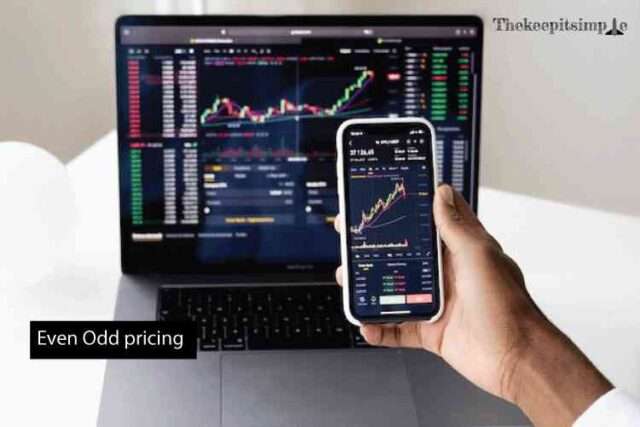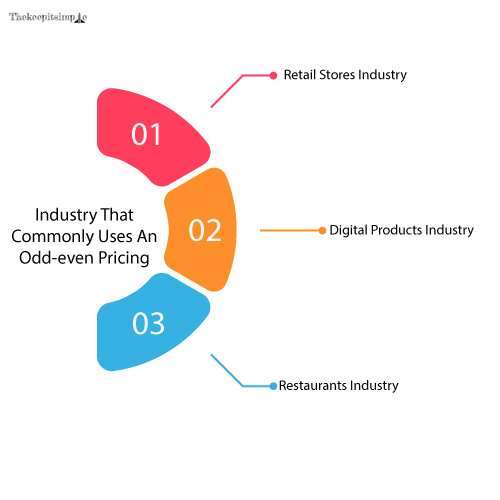Even odd pricing is one of the pricing strategies that help set up the price of your products. It widely depends upon your product offering goal. Odd pricing refers to keeping the odd digits at the end of your prices. In contrast, even pricing refers to keeping the even digits at the end of your prices.
It is a psychological factor to make your prices perceived as affordable or premium. It will also help your brand to bring more sales and increase revenue. This guide has mentioned all the essential details regarding the strategy.
What is Odd-even Pricing?
Even-odd pricing refers to a psychological pricing strategy that businesses use to play with the mind of customers and make the prices more appealing to them. It generally makes the prices showcased ending in odd numbers, such as $9.99 or $69.95, instead of even numbers, including $10 or $70.

The basic idea behind this pricing strategy is that customers perceive the odd numbers at the end of the prices as a cheaper option than the even numbers. It works no matter what, even if the difference is only a few cents. It happens because the customers subconsciously focus on the left side digits, which shows less in these pricing strategies.
It is generally used for retail products or services to make the price look cheaper. This pricing strategy is also working well for high-priced items. Therefore, this pricing strategy is very helpful in attracting price-sensitive customers.
The Psychology Behind Odd-even Pricing
According to Monash University Australia, Odd-even pricing has a psychological effect on consumers. It creates a perception that your product or service is more affordable, even after the difference of a few cents or a dollar.
It happens due to a famous phenomenon known as the left-digit effect, which allows the customers first to notice the left digit to evaluate the perceived value of your product or service. For instance, people generally perceive $9.99 as cheaper than $10. It subconsciously encourages the buyer to purchase the product or service.
The left-digit effect allows people to focus on the foremost digit to evaluate the magnitude of the product or service. Therefore, it will enable the companies to benefit from the fact that people generally buy the products based on their intuitive impressions instead of analytical pricing.
Industry That Commonly Uses An Odd-even Pricing
Many industries are widely using even odd pricing. In this section, we have mentioned the common industries utilizing this pricing strategy, and you would have just realized it. You will recognize this pricing strategy the next time you see such advertising prices.

1. Retail Stores Industry
All the retail stores utilize even odd pricing, especially during the promotional period. You would have seen the board of products selling at $19.99. As it is less than $20, people believe it is a good price deal.
Even pricing is generally found in luxury retail stores, making people perceive the products or services as premium or luxury value. It works the opposite for premium or luxury retail stores.
2. Digital Products Industry
Digital products that make sales via Facebook Ads or Google Ads are generally priced in the even odd pricing. These simple dollar differences change the entire sales scenario often. Thus, you would have seen various ads on Instagram, Facebook, or Google with weird or odd-even price ranges.
3. Restaurants Industry
Many restaurants also offer odd/even pricing to make bigger meals look much more affordable. For instance, restaurants offer family dinners at even odd pricing (i.e., $29.99) to make them appealing for family dinners.
However, premium or luxury hotels use even pricing to increase the premiums of the meals. It also makes the restaurant look more premium, which gives it a luxury vibe. For instance, a luxury restaurant can charge $50 for the same family dinner.
Odd-even Pricing Example
There are various odd, even pricing examples. Odd pricing is used for price-sensitive customers, while Even pricing is used to make the brand perceived as a luxury brand. Let’s see some basic examples of both pricing methods.
1. Men’s Wearhouse: Utilize Odd Pricing
The Men’s Wearhouse clearance section is one of the finest examples. This outlet offers various aggressive deals for different sports coats to sell the products in bulk and free up the inventory. Therefore, the company opted to utilize odd pricing to make the price look more affordable.
2. Kay Jewelers: Utilize Odd Pricing
Kay Jewelers come up with the odd pricing, intending to create a perception of providing glamorous jewelry for the best possible deals. They mostly price their products at $189 or $29.95. It helps them play a simple, even odd pricing trick to create a perception of affordability in the customer’s mind.
3. Mattress Firm: Even Pricing
Mattress Firm comes up with various types of products, along with a divergent customer base. They offer both odd and even pricing, as they have a vast product range and customer base. They generally provide their low-tiered products at odd pricing to sell more. They offer high-tiered products at even pricing to give them a premium look.
4. Tiffany & Co: Even Pricing
Tiffany & Co doesn’t come up to set itself up as a premium brand. They widely use the even pricing strategy. They have even put up prices like $1100. It allows them to grab all the customers that can spend more money over perceiving quality products.
Even Odd Pricing Advantages and Disadvantages
Even odd pricing has various advantages as well as disadvantages. They come up with a great advantage; they also have a drawback. Let’s look at the advantages and disadvantages of even odd pricing.
Advantages:
- Encourage Impulse Purchase: Even odd pricing makes the product pricing look cheaper. Thus, they allow the customers to purchase the product instantly. It typically makes people feel discounted.
- Encourage Large Buys: If people find the products at a discounted price, they naturally purchase more products. In technical terms, people also need help to calculate proper pricing. It makes them buy a little more than required.
- Manipulate Customer’s Perception: Even odd pricing sets up the pricing to play with the customers’ minds. It manipulates them and encourages them to instantly purchase the product.
Disadvantages:
- Downgrade Perception of a Brand: Odd-even pricing makes the product prices look cheaper, which makes the customers purchase the product. Therefore, it only attracts price-sensitive customers. They are just attracted because of price, which deters them from becoming your loyal customers.
- Miscommunicate: Odd-even pricing creates a perception of low price. The prices are relatively low. Thus, it needs to communicate more effectively with the audience. It doesn’t retain them in the long term.
To Wrap Up
Even odd pricing is the pricing strategy to make your product look more affordable. It plays with the customer’s mind even after just a difference of a few cents or a dollar. Thus, it brings higher prices for the business, making it perceived as a lower one. We hope you like the guide and find all the essentials regarding the even-odd pricing.